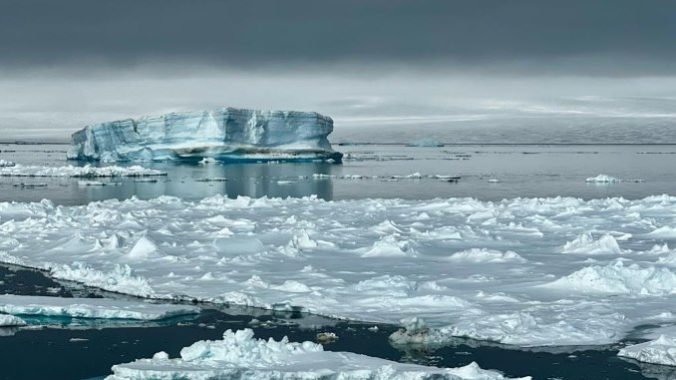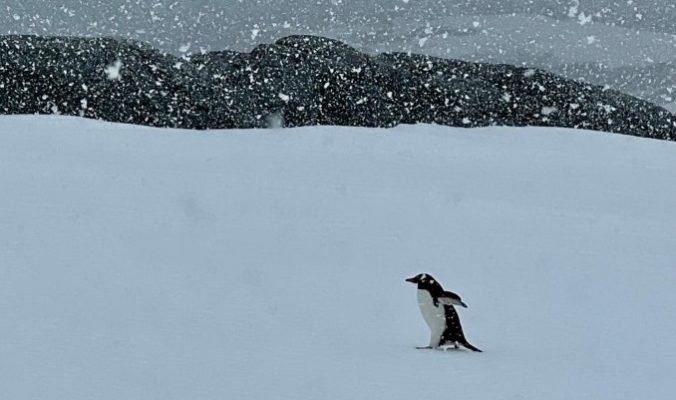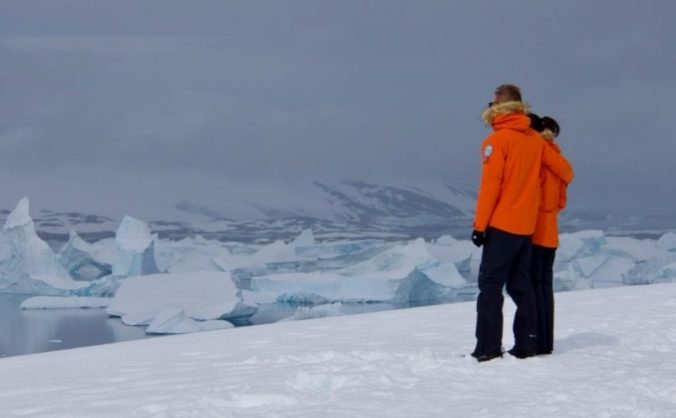The Last Place on Earth: My Journey to Antarctica with National Geographic
Photos courtesy of Blake Snow
“Get Out There” is a column for itchy footed humans written by long-time Paste contributor Blake Snow. Although different now, travel is better than ever. Today we visit the bottom of the world, Antarctica, aboard National Geographic Explorer.
I saved the best for last. After 10 years of travel writing, I recently made landfall on Antarctica, my seventh and final continent. It is the most stimulating, majestic, and unpredictable place I’ve ever visited.
For two weeks aboard National Geographic Explorer, my wife and I saw thousands of gleaming icebergs and pungent penguins. We gawked at massive but nameless glaciers and snow-capped mountains that would be protected national parks anywhere else. We saw dozens of breaching whales, several calvings, and pods of orca intent on eating a distressed humpback for dinner. We also survived 25 foot waves on the infamous Drake Passage, marital strife while kayaking ice flows, and the below freezing waters of the polar plunge. We did all of this among the most professional wait staff, capable crew, and scientists sailing the Southern Ocean today—usually in between five-course meals with icebergs, wildlife, and three hour sunsets outside our table window.
In short, cruising to Antarctica with National Geographic was not a “trip” as we often say. It was an expedition. It was also an amazing privilege—but an expensive one at that. While you can sometimes find end of season sales on cut-rate cruises for $5000-6000 per person, most expedition-grade, naturalist-led, and all-included luxury ships like the one I sailed start at three times that.
But if you have the means or discipline to save for such a once-in-a-lifetime adventure, sailing to, hiking on, and zodiac-ing around Antarctica is worth every penny. Here’s why.
Polar exploration for everyone
I’ve never traveled anywhere that took so long to get to. Most of us, for instance, can fly anywhere in the world within 12-24 hours. Antarctica is different. Landings first require an overnight flight to Ushuaia, Argentina, aka “El Fin Del Mundo,” followed by two sailing days on the 500 mile Drake Passage, which is often choppy and sometimes rougher than any other stretch of sea. So three days each way.
That’s considerably longer than previous land expeditions I’ve made to The Alps, Patagonia, Machu Picchu, or Japan. I say that because journeying to Antarctica is likely the most extreme, underdeveloped, and unpredictable adventure any of us will endeavor. Never before did I feel more unprepared or unsure of what to expect than from Antarctica. Only the moon seems more remote.
After booking this trip, I expected to see the last place on earth with my own eyes. But I failed to realize that I would actually become a polar explorer in the process. To feel that is to feel alive. Even if I was asked to hike between the orange cones the guides had placed on land for us, as one of the hundred parka wearing “penguins” I explored with.
Come for the penguins, stay for the ice

Fact: Antarctica is the least photographed content on the planet. Because of this, it’s like visiting a place with no postcards. I cannot describe what that feels like other than it’s the only continent you can still visit completely fresh. While many travel writers exaggerate with claims of “like nothing you’ve seen before,” Antarctica is the only place on Earth where this cliche is actually true—a continental-sized national park that’s yet to be discovered.
While crossing the Weddell Sea, we were flanked by ice floes and giant icebergs as far as we could see. While hugging the peninsula, I lost count of the number of majestic mountains and glaciers we confronted. “All of these would have names and brochures on any other continent,” I said to my wife. As our ice-breaking ship navigated the content, it would often crush massive blocks of ice, which rattled but never broke our course. On short hikes up nearby peaks, I swore many of them could rival the famous hikes I’ve taken on any other of the six continents.
-

-

-

-

-

-

-

-

-

-

-

-

-

-

-

-

-

-

-

-

-

-

-

-

-

-

-

-

-

-

-

-

-

-

-

-

-

-

-

-









































